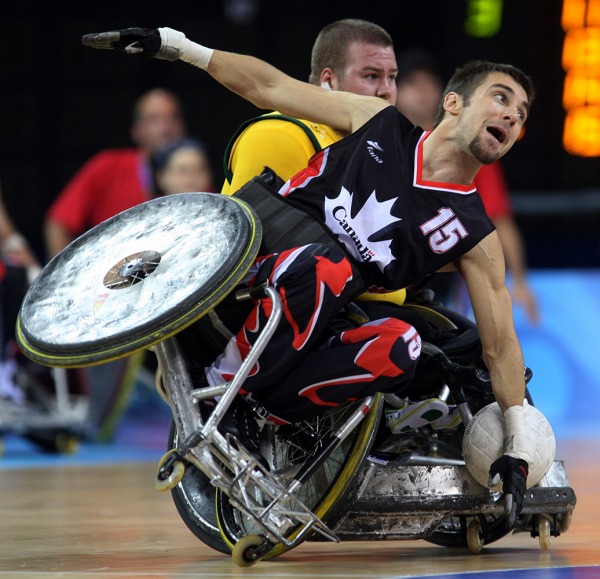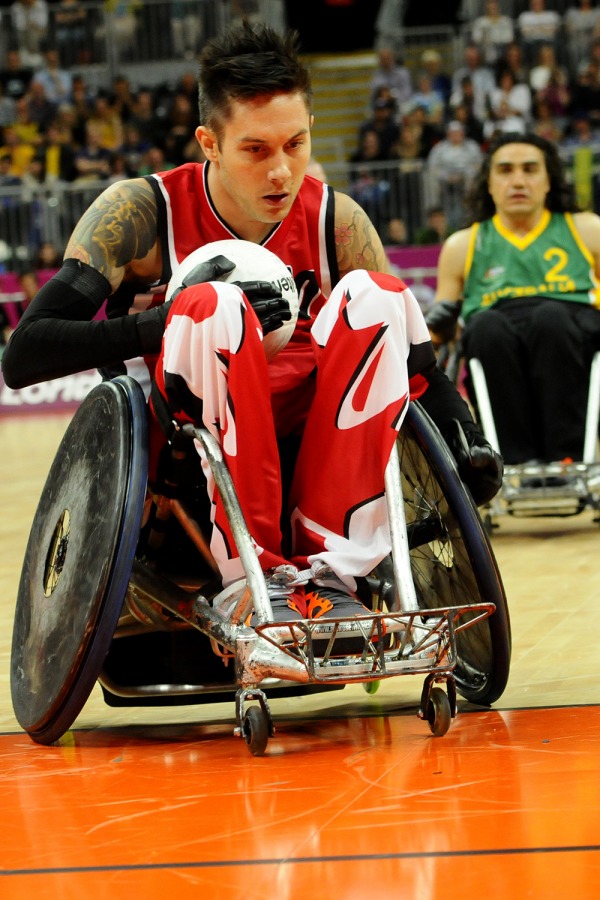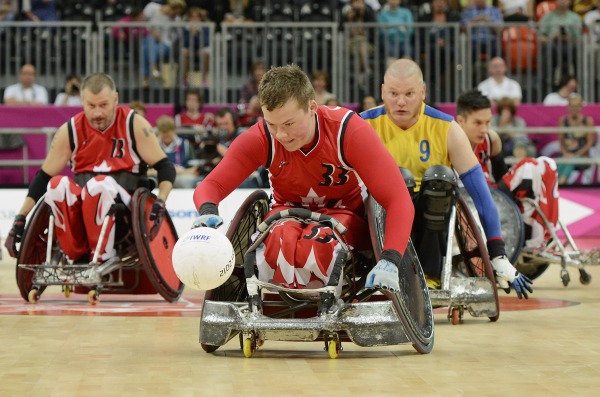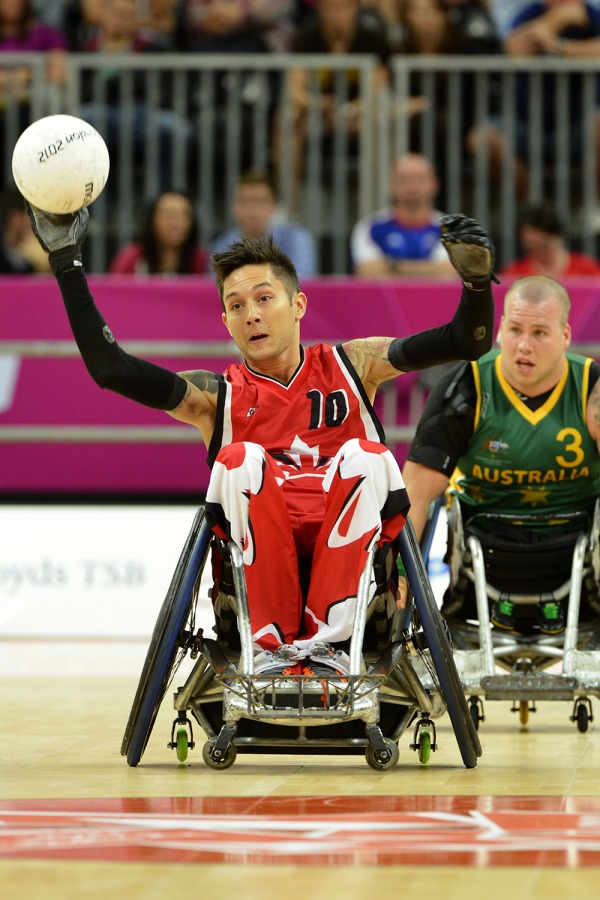Home | Canadian Firsts in Sport | Five Sports Invented in Canada
Wheelchair Rugby
PreviousNext
Celebrated for its speed and physical intensity, wheelchair rugby was invented in 1976 by a group of quadriplegic athletes in Winnipeg as an exciting team sport for people with limited use of their arms and hands. Combining aspects of basketball, rugby and handball, players use wheelchairs specially designed to tackle and block, strategically working together to carry a ball over their opponents' goal line. The sport is open to both men and women, and all teams must field athletes with a wide range of functional abilities.
Following Canada's first Canadian National Wheelchair Rugby Championship in 1979, the sport's international profile grew rapidly. Demonstration matches were first played at the Paralympic Games in 1994, and wheelchair rugby became a full medal event in 2000. Since then, the game's hard-hitting action has redefined wheelchair sports, thrilling spectators all around the world.
Star players like Trevor Hirschfield continue to raise the profile of wheelchair rugby as the sport nears its fiftieth anniversary. Paralyzed below the neck at the age of 16 after a traffic accident, Trevor met Duncan Campbell, one of the game's original inventors, while undergoing rehabilitation. With Duncan's encouragement, Trevor made Canada's national team in 2006, and in 2012 was named co-captain of the squad. He helped Canada win bronze at the 2008 Paralympic Games in Beijing, and his outstanding leadership helped the team improve to silver at the 2012 Paralympic Games in London. In 2015 he helped Canada capture gold on home soil at the Parapan American Games in Toronto in front of a sold-out crowd. Praised for his tenacious, competitive play, Trevor has shared many of his experiences over social media with humour and insight. A dynamic ambassador for an innovative Canadian sport, his efforts on and off the field of play have helped attract new audiences and generate unprecedented support for wheelchair rugby in the 21st century.

Wheelchair rugby is a team sport for athletes with a disability that combines some elements of basketball, handball and ice hockey. The object of the game is to carry the ball across the opposing team's goal line. It is played on an indoor hardwood court and all players compete in manual wheelchairs. Physical contact between wheelchairs is an integral part of the game.
Collection: Canadian Paralympic Committee/Mike Ridewood

Wheelchair rugby was invented in 1976 in Winnipeg, Manitoba by a group of quadriplegic athletes who were looking for an alternative to wheelchair basketball. The sport was originally called murderball. It gained popularity rapidly and the first international tournament was held in Toronto, Ontario in 1989. It became a full-medal sport at the 2000 Paralympic Games in 2000 in Sydney, Australia.
Collection: Canadian Paralympic Committee/Matthew Murnaghan

Wheelchair rugby was created as the inventors, Jerry Terwin, Duncan Campbell, Randy Dueck, Paul LeJeune and Chris Sargent, were looking for a more challenging game. As a sport it was designed to allow athletes who suffer functional impairments to both their upper and lower limbs to play both offensive and defensive roles. It is a fluid, fast-moving and aggressive sport that is as exciting to watch as it is to play.
Collection: Canadian Paralympic Committee/Phillip MacCullum

Zak Madell began to play wheelchair rugby after previously playing wheelchair basketball, sledge hockey and lacrosse. He plays an all-round game and is known for his speed, passing, catching and hitting abilities, making him one of the most important players on the squad. He is also respected for his sense of community and leadership in acting as an athlete ambassador for his sport.
Collection: Canadian Paralympic Committee/Matthew Murnaghan

Trevor Hirschfield was introduced to the sport by one of its co-inventors, Duncan Campbell, who was his recreation therapist. He made the national team in 2006 and won a gold medal at the 2015 Parapan Games in Toronto, as well as two Paralympic medals. He is known as a consistent player with strong ball control and an ability to guard his teammates. He was named as the co-captain of Team Canada in 2012 in recognition of his leadership and competitive nature.
Collection: Canadian Paralympic Committee/Phillip MacCullum
Previous Next


